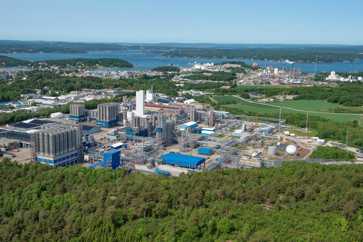Borealis expands cross-linked polyethylene production in Sweden
- A major investment at Borealis’ site in Stenungsund, Sweden, will expand production of cross-linked polyethylene (XLPE) for power cable insulation materials
- Delivered through two projects, the expansion adds new capacity for medium-, high- and extra-high voltage (MV, HV, and EHV) applications; it also expands Borealis’ closed and controlled loop (from monomer to final packaging) system to ensure the highest cleanliness standards in HV and EHV production
- The investment is part of Borealis and Borouge’s EUR 200 million "Building for the Future" commitment to provide customers with the advanced materials they need to deliver the power cables essential for the energy transition
Borealis is pleased to announce two major investments in cross-linked polyethylene (XLPE) production facilities at its site in Stenungsund, Sweden. Together, these projects will significantly increase capacity for insulation materials used in medium-, high- and extra-high voltage (MV, HV, and EHV) power cables. These cables are essential for expanding transmission and distribution networks so they can integrate more renewable energy sources, support electrification, and ultimately deliver the energy transition. These investments build on the Stenungsund site’s long-standing expertise, where decades of research, advanced laboratories, and a skilled team have established it as a global center of excellence for XLPE materials.

Project 1: Expanding capacity for MV XLPE. The first project is the construction of a new production unit for insulation grades used in medium-voltage power distribution cables. The asset will produce a new-generation homopolymer XLPE grade that matches the proven performance of Borealis’ existing MV portfolio, including processing and productivity advantages, while delivering a lower carbon footprint through optimized production.
The expansion will improve local material availability within the EU, ensuring continuity of supply to meet MV market demand. It will also enable bulk deliveries, further reducing the cradle-to-gate carbon footprint of the product. Commercial availability is expected in Q1 of 2027.
Project 2: Expanding capacity for high-end XLPE for HV and EHV applications. The second project adds capacity for advanced XLPE grades used in high- and extra-high voltage alternating current (AC) and direct current (DC) cable systems. These systems are essential for reinforcing national grids and enabling large-scale power transmission. HVDC technology, in particular, is needed to bring offshore renewable power to shore and integrate it into national grids.
As part of this expansion, Borealis will further expand its closed and controlled loop (from monomer to final packaging) system to ensure best-in-class cleanliness standards and the reliability required for critical energy infrastructure.
Construction is scheduled for completion in 2026, with commercial availability expected during the course of 2027.
Building for the future. “We’re continuously investing in innovation and optimizing our product portfolio to meet the evolving needs of the energy industry,” says Craig Arnold, EVP Polyolefins, Circular Economy Solutions and Base Chemicals, Borealis. “This expansion at our Stenungsund site strengthens our ability to keep pace with growing demand for advanced insulation materials and enables our customers to deliver the power cables that make the energy transition possible.”
This investment is part of Borealis and Borouge’s “Building for the Future” commitment, a EUR 200 million initiative to upgrade and expand XLPE and semicon assets at key European sites. It follows the upgrade of Borealis' semiconductive compounding in Antwerp, Belgium, which was completed earlier this year. Together with ongoing investments in Ruwais, UAE, these projects will double Borealis and Borouge’s ability to serve the most demanding power cable applications by 2027—helping customers deliver the grids essential to a decarbonized energy system.






Comments